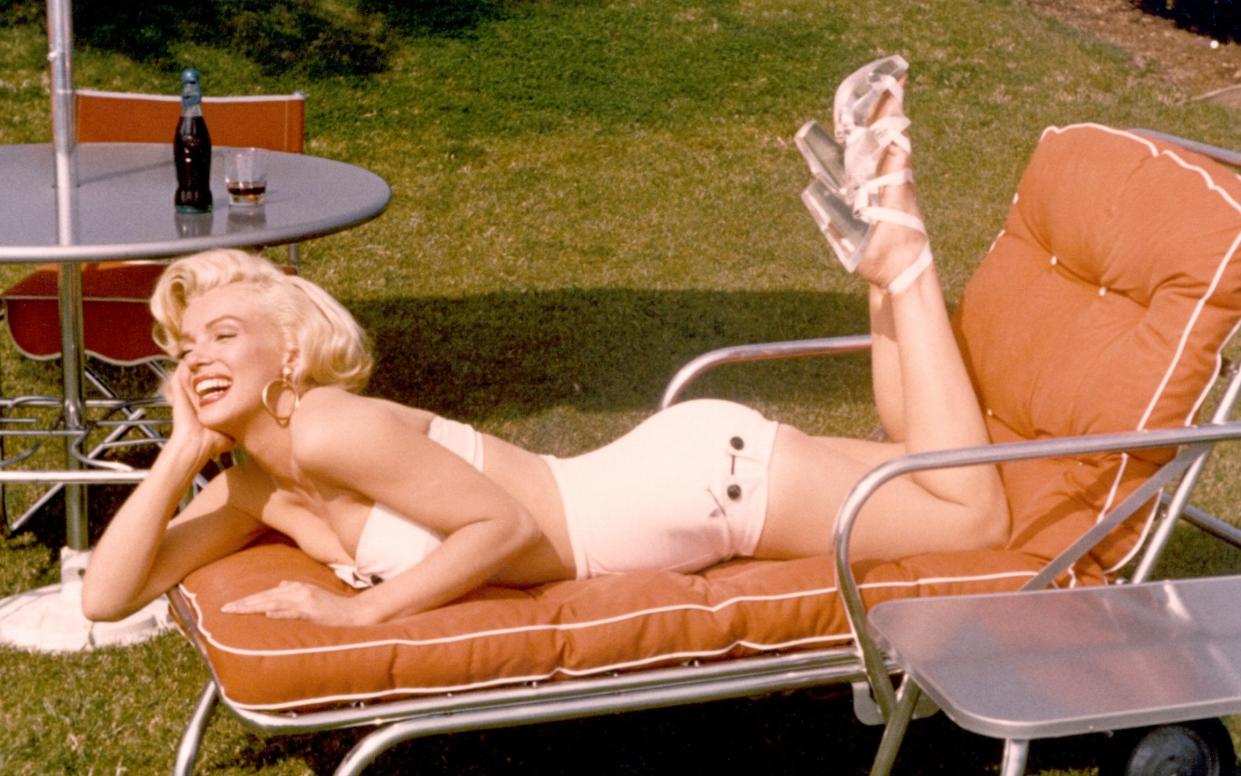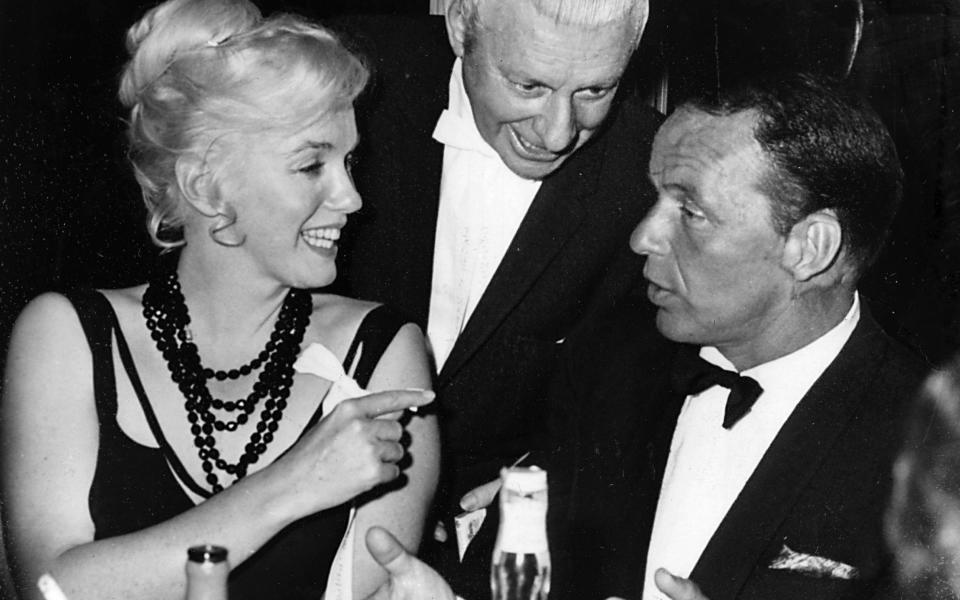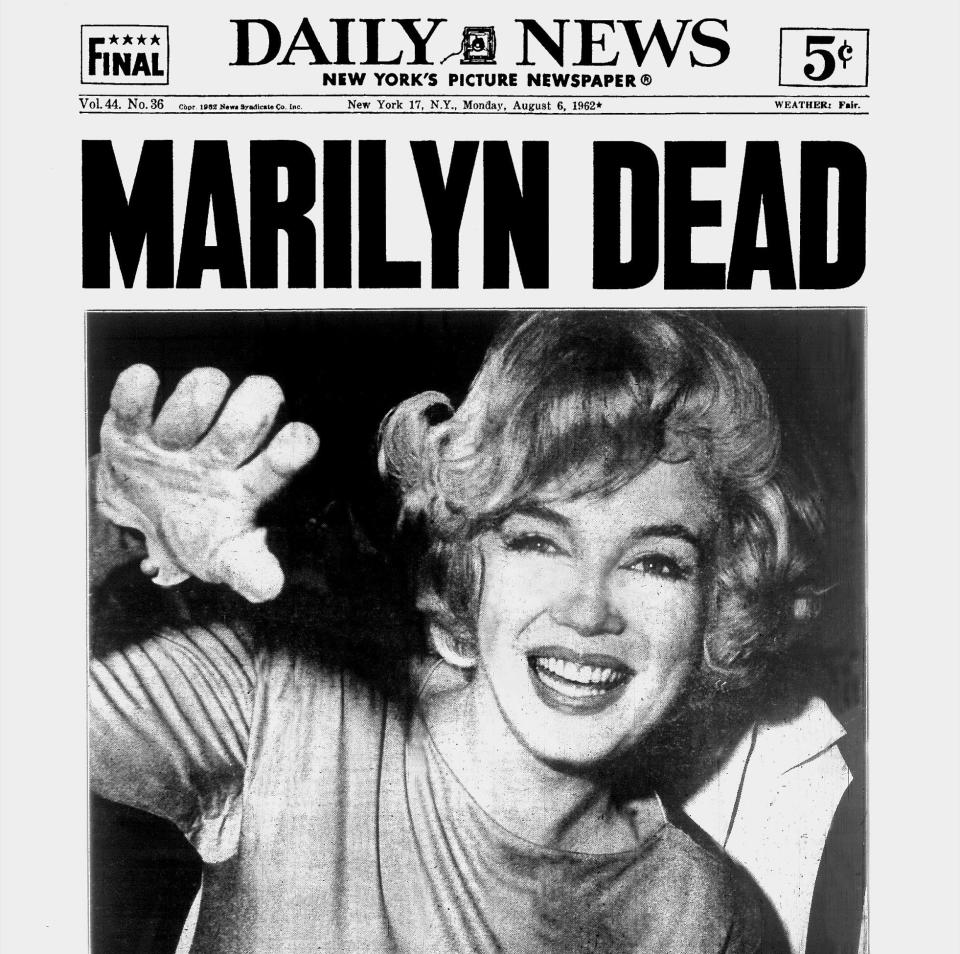Did Bobby Kennedy murder Marilyn Monroe?

Poignant, melancholic, it is a voice that seems to come from beyond the grave. “The true things,” it says, “rarely get into circulation. It’s usually the false things… because it’s hard to know where to start, if you don’t start with the truth.”
The voice belongs to Marilyn Monroe, and it is the first thing we hear at the beginning of a gripping new Netflix documentary, The Mystery of Marilyn Monroe: The Unheard Tapes.
The mystery, of course, is Monroe’s death, the truth of which has been a matter of dispute and speculation for 60 years, since the early hours of August 5 1962 when the lifeless body of the world’s most famous actress was found in bed at her Spanish Colonial home Cursum Perficio – “Journey’s End” – in Los Angeles.
At the time of her death, the coroner’s report concluded that Monroe had died of a drugs overdose that was either a suicide or an accident. No suicide note was found. In the years since, her death has spawned a myriad of conspiracy theories, with a cast of characters including Frank Sinatra, Jimmy Hoffa, the Mob-connected president of the powerful Teamsters Union, the CIA and the FBI. But at the heart of the conspiracy theories have been President John F Kennedy, and his brother Robert, the United States Attorney General.
The new documentary is based on the tapes of Anthony Summers, the Irish investigative journalist who in the 1980s spent three years investigating Monroe’s death, talking to 1,000 people who knew her and were able to cast light on the final days and hours of her life, accumulating more than 650 taped interviews, and who in 1985 published the book Goddess: The Secret Lives of Marilyn Monroe.
Through archive footage, photographs and the novel use of having actors playing the parts of the principal characters and ventriloquising the original tapes, the documentary provides a vividly compelling, and affecting, portrait of Monroe’s life that reminds you she was a brilliant star, not just a tragic one – as tragic as her end was.
Summers's conclusion is that while the circumstances around her death were certainly covered up, he did not find anything to convince him that she had been, as he puts it, “deliberately killed,” and that the coroner’s verdict of suicide or an accidental overdose of drugs was correct.
But that verdict is disputed by American author Mike Rothmiller, whose book on Monroe’s death, Bombshell, was published last year. Rothiller’s story is an interesting one. He served for 10 years with the Los Angeles Police Department (LAPD) five of them as an undercover detective with the Organised Crime Intelligence Unit (OCID), going on to work in the US Department of Justice and private security.
Co-written with the British journalist Douglas Thompson, Bombshell reads like a James Ellroy novel with its catalogue of corruption, sleaze and skullduggery, and a conspiracy that enabled and protected the Kennedys’ involvement in Marilyn’s life and death, going to the highest echelons of the LAPD.
Rothmiller says it was during his time working in the OCID that his interest in Monroe’s death was galvanised when he came across a duplicate copy of her diary – long believed to have been lost – in the OCID files. How it got in the files, and who put it there is a mystery, he says. But it put him on a trail that would eventually lead him to concluding that Marilyn’s death was neither suicide nor the result of an accidental overdose, but that she had died at the hand of Robert Kennedy.

The key figure in this story is Peter Lawford, the British actor and member of Frank Sinatra’s “Rat Pack”, who was married to Kennedy’s sister Pat, and who basically acted as procurer-in-chief for the famously libidinous JFK whenever he was in California.
Lawford introduced Marilyn to JFK in 1954, at the time she was married to the baseball hero Joe DiMaggio. They began an affair which allegedly continued throughout her subsequent marriage to the playwright Arthur Miller, and after JFK had been elected President in 1961.
Their liaisons would usually occur when Kennedy was in Los Angeles, at Peter Lawford’s beach house at Malibu. They were being monitored by the FBI, and by a private investigator named Fred Otash, whose client list included Mafia heads, Democratic and Republican politicians, Howard Hughes and the Hollywood scandal sheet Confidential.
Otash had arranged for bugs and wiretaps to be placed in both Peter Lawford’s and Marilyn’s homes. Otash confirmed that he had heard tapes of Monroe and JFK making love, “but I don't want to get into the moans and groans of their relationship.” Furthermore, Otash had evidence that Monroe was also having an affair with Robert Kennedy.

From her earliest days in Hollywood, Marilyn had been the victim of powerful and exploitative men in the movie industry – she once described Hollywood as “an overcrowded brothel” – but her involvement with the Kennedys was of an altogether different order of exploitation, and risk.
At a time of official paranoia about any sort of left-wing sympathies in Hollywood, the FBI had a file on Marilyn, at one time tracking her to Mexico, where she often visited, and where, according to the files, she met with “known Communists”. (Rothmiller says a report in the OCID files suggests that Monroe also had an abortion in Mexico after becoming pregnant by Bobby Kennedy.) With tension escalating between Cuba and the USA, Monroe’s intimacy with JFK was a cause of growing alarm.
On May 19 1962, spilling out of a figure-hugging dress, Monroe celebrated Kennedy’s birthday, singing Happy Birthday, Mr President at a gala event at Madison Square Garden. The journalist Dorothy Kilgallen would describe the performance as “making love to the President in the direct view of 40 million Americans.”
At an after-party, Monroe was photographed talking with both Kennedys – the only photo of her with both men thought to be in existence. She spent that night with JFK at the Carlyle hotel. It’s believed to be the last time they met.
Shortly afterwards, Peter Lawford telephoned her to tell she must never see, or try to contact, the President again.

If JFK offered the fatal allure of a powerful, attractive man, his brother, Anthony Summers speculates that Bobby appealed to her as a protective, stable figure. He was a family man - a family being something that Marilyn, who had grown up shuttled between orphanages and foster care, had never had.
According to Rothmiller, Marilyn wrote in her diary. “Bobby is gentle. He listens to me. He’s nicer than John… Bobby said he loves me and wants to marry me. I love him.”
Was Monroe delusional? For Robert Kennedy to abandon or divorce his wife Ethel and their seven children for Marilyn Monroe would have been political suicide. “Now we don’t know, did he really say that to her?” Rothmiller says now. “Or did she suggest it to [Kennedy] and he just said, 'sure, honey, whatever…' But from reading her diary and the transcripts of wiretaps, that’s what she actually believed. But it would never have happened.”
Marilyn was spiraling out of control, drinking heavily and taking prescription drugs to ward off depression. In the last week of July she attended a party at Frank Sinatra’s Cal Nevada resort where Sinatra consorted with Mob figures and friends including the ubiquitous Lawford, and where, according to Bombshell a sexual “free for all” took place, “with Monroe as the central player.”
According to Rothmiller, she wrote in her diary “What happened to me. I was drunk. I don’t remember. Did I have sex.[sic].” Another entry read: “Frank said I can’t keep my f______ mouth shut. He told me to get out. I don’t know why he’s treating me this way.”

It was in the immediate aftermath, according to Rothmiller, that Lawford, once again, was the go-between; he’d been instructed to tell Marilyn never to contact Robert Kennedy again. “Bob and John used me,” she supposedly wrote in her diary. “They used me… I”m not going to stand for that.”
According to Rothmiller, OCID intelligence documents and wiretaps suggest that Monroe was threatening to call a news conference to expose her relationships with both the Kennedys, and reveal details of her pillow-talk with JFK about Cuba and Fidel Castro.
“She would have taken down the Presidency,” Rothmiller says. “And the indications from everything I saw was that she was really angry, a woman scorned, and it was more likely she was going to do it than not.”
Robert Kennedy was not mentioned in the official investigation into Marilyn’s death. It was only in the years afterwards that it emerged that on the afternoon of August 4, Kennedy flew into Los Angeles from San Francisco, and with Peter Lawford went to Marilyn’s home.
In the early hours of the following morning, Marilyn was found dead in her bed. The Netflix documentary quotes Reed Wilson, a surveillance expert who was working for Fred Otash, as saying that in the immediate aftermath of her death he was told by Otash that Lawford had instructed him to clear Marilyn’s house of anything that might compromise the Kennedys. But the theory that Marilyn was murdered”, Wilson says, is “baloney”.

Rothmiller offers a more sinister conclusion - and claims that his witness is Peter Lawford. By Rothmiller’s account, in 1982 Lawford agreed to meet him in a Los Angeles park. By then, Lawford’s life was on a downward spiral; he was drinking and drugging heavily - but sober, Rothmiller says, at the time of the meeting. He was “guarded and apprehensive”, and initially rattled off what Rothmiller describes as the “script” provided to him by the LAPD Intelligence in the aftermath of Marilyn’s death.
“I stopped him and said that’s bullshit. He didn't take that kindly. I thought he was going to leave. But finally he sat down again; he was cradling his face, and he said, what do you want to know? And he just started laying it out.”
According to Rothmiller, Kennedy and Monroe had a violent argument. While Lawford comforted Monroe, Kennedy stormed into Marilyn’s bedroom, searching for her diary, and then went to the kitchen returning with a glass of water that he handed to Marilyn, telling her “Drink this, you’ll feel better”. Marilyn did not die from a barbiturate overdose, Rothmiller says, but from poisoning - Rothmiller speculates by a shellfish toxin, Saxitoxin.
Lawford and Kennedy then left the house. Kennedy was spirited away to the airport, and on the morning of August 5th, with his wife Ethel and four of his children attended Mass at a Catholic church in Gilroy, northern California. It was left to the LAPD and the FBI to orchestrate a cover-up story clearing the Kennedys of any connection to Marilyn’s death.

Why did Rothmiller think Lawford had told him the story? “There are a few people, when I interrogated them, had been carrying around a secret for a number of years, and when they break down and tell you, you can see their relief. It’s as if they're passing it on and no longer have to carry it. I could see it was taking an emotional toll on him and I decided to break it off then. Quite frankly I was buzzing too with all this stuff.”
It’s a fantastic story – too fantastic, perhaps. Every witness who could corroborate it is now dead. But Rothmiller swears every word is true, and says he has the documents to prove it.
But why did he wait 40 years to tell the story? Partly, Rothmiller says, because he feared for his own life. A few weeks after meeting Lawford, he says, there was an attempt on his life (although this may have been to do with an investigation he was working on involving the CIA and drugs running in Mexico). It was not until the “protective shield” around the Kennedy clan finally collapsed, he says, that he felt the time was right to tell the story.
Rothmiller says he still takes precautions, keeping his findings and documentation “in a safe place” and being cautious in his movements. He is now working on a book about Frank Sinatra. “It will have a lot of revelations, let’s put it that way.”
So he’ll be even more careful about starting his car in the morning? “I always have my wife start it.” He’s joking.

 Yahoo News
Yahoo News 
